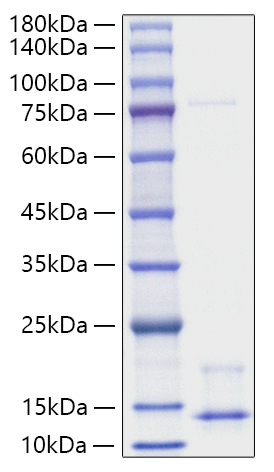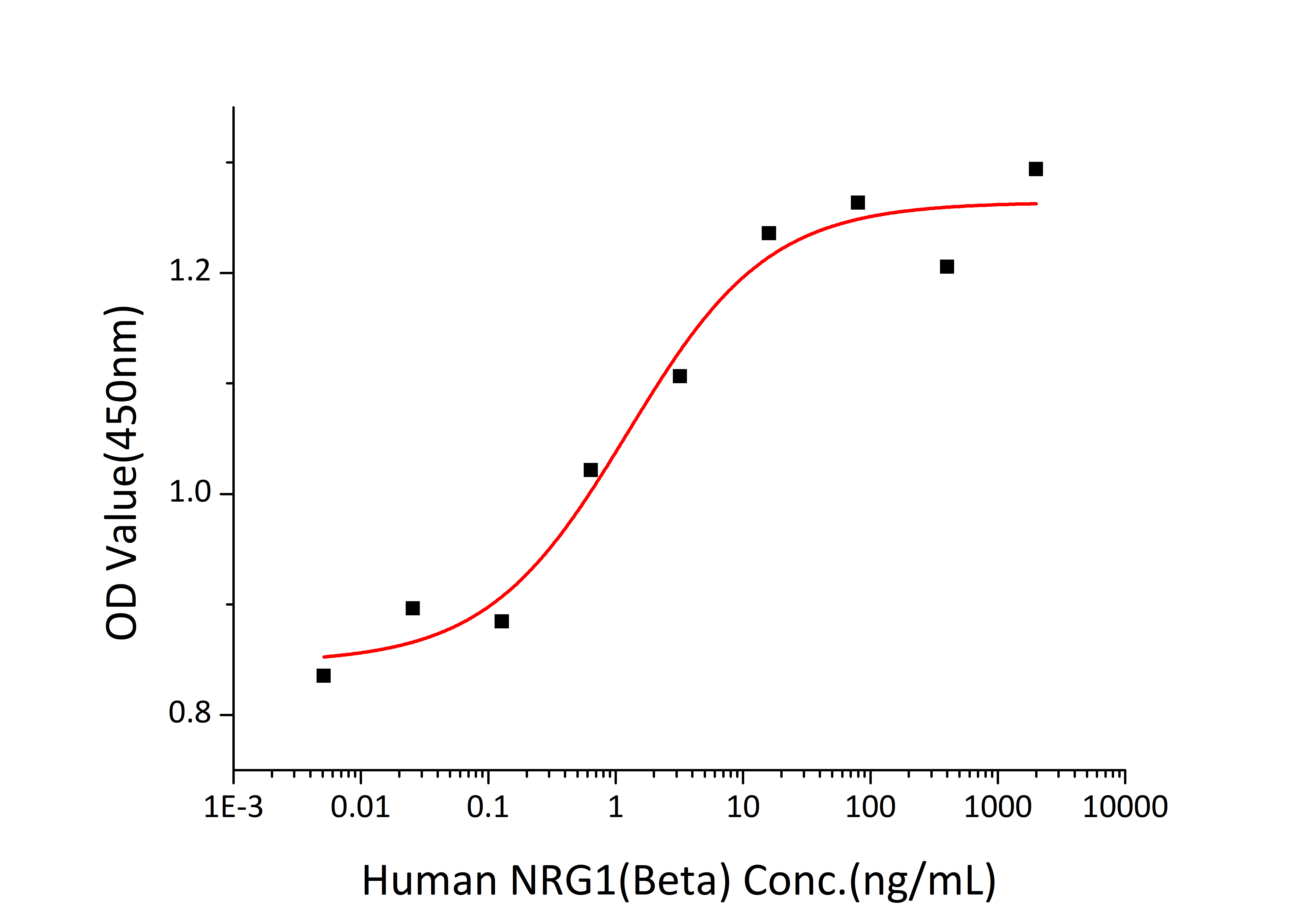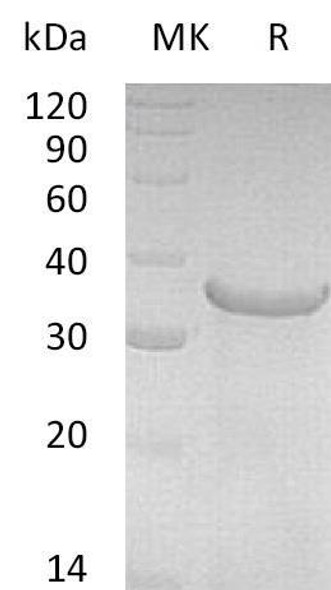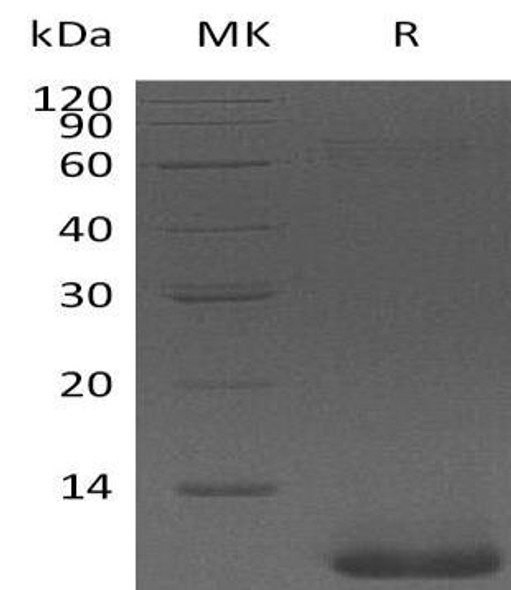Description
Recombinant Human Pro-neuregulin-1/NRG1 (Beta1) Protein
The Recombinant Human Pro-neuregulin-1/NRG1 (Beta1) Protein is a biologically active recombinant protein that plays a significant role in various cellular processes and signaling pathways in human biology. This protein is widely employed in immunological research, cell biology studies, protein-protein interaction analyses, and therapeutic development, providing researchers with a reliable tool for investigating Pro-neuregulin-1/NRG1 (Beta1) function and its implications in health and disease.
This product (SKU: RPCB1618) is produced using E. coli. The protein exhibits a calculated molecular weight of 8.06 kDa with an observed molecular weight of 10-15 kDa under denaturing conditions, achieving ≥ 90 % as determined by SDS-PAGE.. Functional bioactivity has been validated through rigorous quality control assays, confirming its suitability for demanding research applications.
Key Features
| High Purity by Affinity Chromatography | |
| Mammalian & Bacterial Expression Systems | |
| High lot-to-lot consistency via strict QC |
| Product Name: | Recombinant Human Pro-neuregulin-1/NRG1 (Beta1) Protein |
| SKU: | RPCB1618 |
| Size: | 10 μg , 20 μg , 50 μg , 100 μg |
| Reactivity: | Human |
| Synonyms: | GGF, HGL, HRG, NDF, ARIA, GGF2, HRG1, HRGA, SMDF, MST131, MSTP131, NRG1-IT2, Pro-neuregulin-1, NRG1(Beta1) |
| Tag: | No-Tag |
| Expression Host: | E. coli |
| Calculated MW: | 8.06 kDa |
| Observed MW: | 10-15 kDa |
| Gene ID: | 3084 |
| Protein Description: | High quality, high purity and low endotoxin recombinant Recombinant Human Pro-neuregulin-1/NRG1 (Beta1) Protein (RPCB1618), tested reactivity in E. coli and has been validated in SDS-PAGE.100% guaranteed. |
| Endotoxin: | < 1 EU/μg of the protein by LAL method. |
| Purity: | ≥ 90 % as determined by SDS-PAGE. |
| Formulation: | Lyophilized from a 0.22 μm filtered solution of PBS, pH 7.4. |
| Bio-Activity: | Measured in a serum-free cell proliferation assay using MCF-7 human breast cancer cells. The ED 50 for this effect is typically 0.62-2.48 ng/mL, corresponding to a specific activity of 4.03×10 5 ~1.61×10 6 units/mg. |
| Reconstitution: | Centrifμge the vial before opening. Reconstitute to a concentration of 0.1-0.5 mg/mL in sterile distilled water. Avoid vortex or vigorously pipetting the protein. For long term storage, it is recommended to add a carrier protein or stablizer (e.g. 0.1% BSA, 5% HSA, 10% FBS or 5% Trehalose), and aliquot the reconstituted protein solution to minimize free-thaw cycles. |
| Storage: | Store at -20℃.Store the lyophilized protein at -20℃ to -80 ℃ up to 1 year from the date of receipt. After reconstitution, the protein solution is stable at -20℃ for 3 months, at 2-8℃ for up to 1 week. |
neuregulin-1 (heregulin-1, NRG1) is a member of neuregulin family, which is comprised of four genes thatencode a large number of secreted or membrane-bound isoforms. All family members share an EGF-likedomain that interacts with the ErbB family of tyrosine kinase receptors. NRG1 isoforms can be classified intotype I, type II and type III isoforms. NRG1 directs ligand for ERBB3 and ERBB4 tyrosine kinase receptors,concomitantly recruits ERBB1 and ERBB2 coreceptors, resulting in ligand-stimulated tyrosine phosphorylationand activation of the ERBB receptors. NRG proteins show distinct spatial and temporal expression patterns andplay important roles during development of both the nervous system and the heart.








